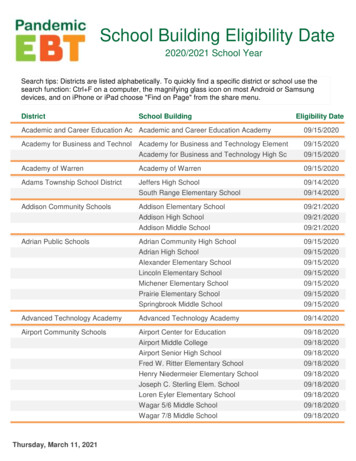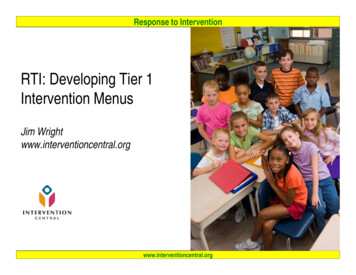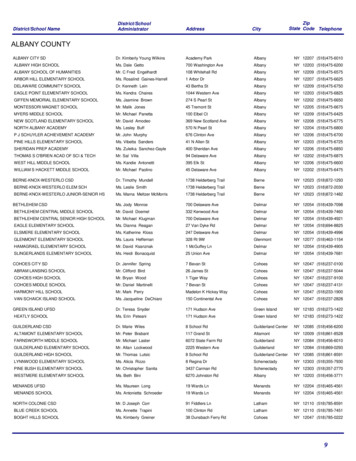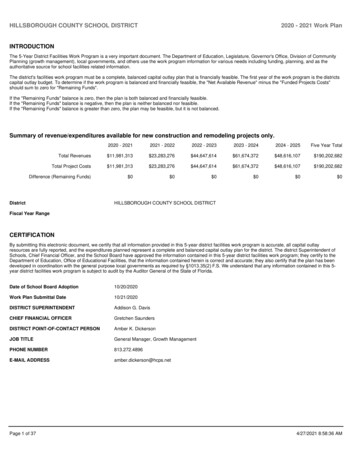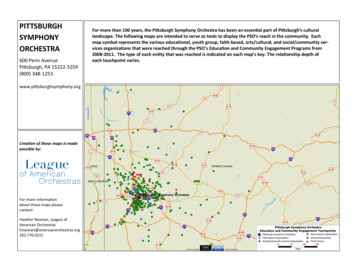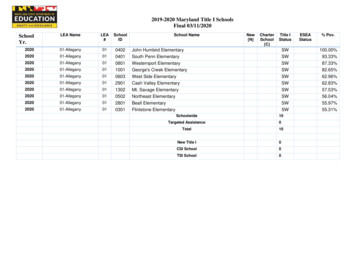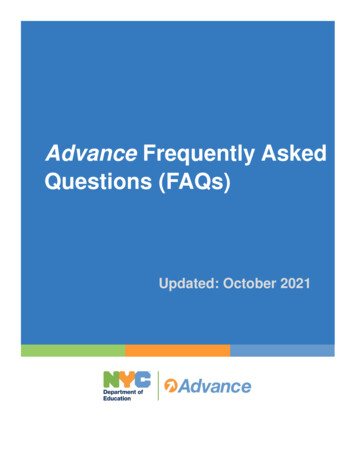
Transcription
PREPAREDNESS OF ELEMENTARY SCHOOL TEACHERS IN THE IMPLEMENTATIONOF BLENDED DISTANCE LEARNING: BASIS FOR TECHNICAL ASSISTANCEbyNORMYN JANE B. NATIVIDADHead Teacher IIISTA. RITA ELEMENTARY SCHOOLEMERSON D. NATIVIDADSchool Principal IFELIX T. PASCUAL ELEMENTARY SCHOOLMARCH 2021ABSTRACT1
PREPAREDNESS OF ELEMENTARY SCHOOL TEACHERS IN THE IMPLEMENTATION OF BLENDED DISTANCE LEARNING: BASIS FOR TECHNICAL ASSISTANCENormyn Jane B. Natividad & Emerson D. NatividadThe Coronavirus(COVID-19) outbreak became a public health concern whichaffected normal processes and conduct of almost everything. Education was greatlyaffected and cannot be conducted on the normal classroom setup. The Department ofEducation in response to the COVID 19 pandemic develop a system through the BasicEducation Learning Continuity Plan (BE-LCP) which ensures that basic education willcontinue despite the threat imposed by the COVID-19 virus to all school personneland learners. This ensures that the teachers will safely deliver education and learnerswill be able to continue learning safely. Distance Learning(DL) was implemented viadifferent modality namely Modular Distance Learning(MDL), Online DistanceLearning(ODL), TV Based Instruction(TVBI), Radio Based Instruction(RBI), andBlended Distance Learning(BDL). BDL is a combination of any of the two learningmodalities mentioned. At present the District of Sto. Domingo is implementing theMDL.This study was anchored on the Transactional Distance Theory(Moore) whichstates the separation or the distance between the teacher and the learner. In thisstudy, dialogue represents the means that the teacher uses to deliver education. Whileteacher and learner dialogue can be facilitated using different communication mediasuch as the internet that can be used to facilitate asynchronous and synchronous orreal-time interaction between teacher and learner.The study focuses on factors that affect teacher preparedness in theimplementation of blended distance learning such as teacher demographics,technology infrastructure or access to technology, application of technology inteaching, technology literacy, and perception of teachers on blended distancelearning. The preparedness of teachers in the implementation of blended distance2
PREPAREDNESS OF ELEMENTARY SCHOOL TEACHERS IN THE IMPLEMENTATION OF BLENDED DISTANCE LEARNING: BASIS FOR TECHNICAL ASSISTANCENormyn Jane B. Natividad & Emerson D. Natividadlearning was categorized into delivery and instruction, assessment of learning,learning resources, and learning support.The result of the study found out that teachers in the district of Sto. Domingowas prepared in the implementation of blended distance learning. While factors suchas teacher demographic and technology infrastructure have no relationship withteacher preparedness in the implementation of BDL. Factors like the application oftechnology in teaching, technology literacy, and perception of teachers on blendeddistance learning were found to be correlated with teacher's preparedness on theimplementation of BDL. These factors showed moderate strength of correlation andwere found to be predictors of teacher preparedness, which concludes that teachersthat possess a higher level of technology literacy, apply technology in teaching moreoften, and have a positive perception about BDL will most likely be prepared inimplementing BDL.The study suggests further technical assistance on aspects of utilizingtechnology in Distance Learning and studies on learner factors to successfullyimplement BDL and improve learning outcomes at the elementary level.3
PREPAREDNESS OF ELEMENTARY SCHOOL TEACHERS IN THE IMPLEMENTATION OF BLENDED DISTANCE LEARNING: BASIS FOR TECHNICAL ASSISTANCENormyn Jane B. Natividad & Emerson D. NatividadTable of ContentsABSTRACT. 1Table of Contents . 4List of Tables . 6List of Figures . 7INTRODUCTION . 8Theoretical and Conceptual Framework . 17Research Questions . 19Hypothesis . 20Significance of the Study . 21Scope and Limitations . 25METHOD . 26Type of Research . 26Sampling Method . 26Sources of Data . 27The Research Instrument . 28Reliability and Validity Testing of the Instrument . 29Ethical Considerations. 30Data Analysis . 30RESULTS AND DISCUSSION . 32Respondents Profile. 32Age. 32Gender . 32Teaching Position . 33Years in Teaching . 34Educational Attainment . 34Technology Infrastructure(Access) . 35Internet Connection . 35Available Devices for Use in Teaching in School and with the Teacher . 36Printing Devices . 36Application of Technology in Teaching . 37Technology Literacy. 38Perception of Teachers in the Implementation of Blended Distance Learning. 39Preparedness of Teachers in the Implementation of Blended DistanceLearning . 41Delivery and Instruction . 41Assessment of learning . 42Learning Resources . 444
PREPAREDNESS OF ELEMENTARY SCHOOL TEACHERS IN THE IMPLEMENTATION OF BLENDED DISTANCE LEARNING: BASIS FOR TECHNICAL ASSISTANCENormyn Jane B. Natividad & Emerson D. NatividadLearning Support . 45Factors Affecting Teacher Preparation in the Implementation of BlendedDistance Learning . 45Application of Technology in Teaching . 46Technology Literacy . 48Perception of Teachers on BDL . 49CONCLUSIONS . 51RECOMMENDATIONS . 52REFERENCES . 535
PREPAREDNESS OF ELEMENTARY SCHOOL TEACHERS IN THE IMPLEMENTATION OF BLENDED DISTANCE LEARNING: BASIS FOR TECHNICAL ASSISTANCENormyn Jane B. Natividad & Emerson D. NatividadList of TablesTable 1 Respondents per School . 26Table 2 Gender Profile . 32Table 3 Teaching Position Frequency Distribution . 33Table 4 Educational Attainment of respondents . 34Table 5 Internet Connection of Teachers . 35Table 6 Teacher with internet access from school . 35Table 7 Internet Connection Speed as Experienced by Teachers . 36Table 8 Application of technology in teaching . 38Table 9 Technology Literacy of Teachers . 39Table 10 Perception of teachers on the implementation of blended distance learning. 40Table 11 Preparedness of Teachers on Delivery and Instruction . 42Table 12 Preparedness of Teachers on Assessment of Learning . 43Table 13 Preparedness of Teachers on Learning Resources . 44Table 14 Preparedness of Teachers on Learning Support . 45Table 15 Factors Correlated with Teacher Preparedness . 46Table 16 Technical Assistance Plan . Error! Bookmark not defined.6
PREPAREDNESS OF ELEMENTARY SCHOOL TEACHERS IN THE IMPLEMENTATION OF BLENDED DISTANCE LEARNING: BASIS FOR TECHNICAL ASSISTANCENormyn Jane B. Natividad & Emerson D. NatividadList of FiguresFigure 1 Research Paradigm . 19Figure 2 Application of Technology in Teaching vs Teacher Preparedness . 47Figure 3 Technology Literacy vs Teacher Preparedness . 49Figure 4 Perception of Teachers on BDl vs Teacher Preparedness . 507
PREPAREDNESS OF ELEMENTARY SCHOOL TEACHERS IN THE IMPLEMENTATION OF BLENDED DISTANCE LEARNING: BASIS FOR TECHNICAL ASSISTANCENormyn Jane B. Natividad & Emerson D. NatividadINTRODUCTIONThe World Health Organization (WHO) declared the novel coronavirus outbreakalso known as COVID-19 a public health emergency of international concern onJanuary 12, 2020. In response to this, the President of the Philippines declares thewhole nation under the state of public health emergency on March 08, 2020, andissued Proclamation 929 which place the island of Luzon on Community Quarantineon March 16, 2020.Education was greatly affected, the regular class was immediately stopped forthe safety of all concerned. The remaining days of the school year were spent at hometo cater remaining school activities which were mostly examinations and remedialclasses. During this time teachers and students have no regular classroom meetingeverything was conducted remotely and facilitated thru other means of communicationsuch as the use of telephone, text messaging, social media, internet, and other onlinecommunication platforms to facilitate distribution and submission of requirements andexaminations.In response to the situation, the Department of Education (DepEd) develop theBasic Education Learning Continuity Plan (BE-LCP) which ensures that basiceducation will continue despite the threat imposed by the COVID-19 virus to all schoolpersonnel and learners. This ensures that the teachers will safely deliver educationand learners will be able to continue learning safely.(The Basic Education Learning Continuity Plan in the Time of COVID-19, 2020)states that education will be delivered via distance or remote learning platforms. TheDepartment also recognizes the circumstances and situations of learners across thecountry and consider factors that may hinder their progress on distance learning. Inresponse, DepEd streamlined the curriculum and come up with the Most Essential8
PREPAREDNESS OF ELEMENTARY SCHOOL TEACHERS IN THE IMPLEMENTATION OF BLENDED DISTANCE LEARNING: BASIS FOR TECHNICAL ASSISTANCENormyn Jane B. Natividad & Emerson D. NatividadLearning Competencies (MELC) to allow learners and parents to focus on whatmatters at the moment. Distance or remote learning platforms will utilize internettechnology for its ability to facilitate interactive, real-time, or synchronous learningactivities. It is also cost-efficient compared to using telephone technology. Onlineplatforms also allow the teacher to deliver materials, assess learners, and provideinstructional support electronically which does not require physical presence thus itdoes not compromise someone’s safety.Distance learning is not a new modality in delivering education, it is alreadyused as an alternative to learners whose circumstances make attending regularly toschool difficult. Module-based alternative delivery modality (ADM) is the most commonused to learners having difficulty attending regular class at schools. This is also usedby the Alternative Learning System (ALS) which caters to out-of-school children andyouth who would like to pursue education despite their circumstances. Specifically, theBE-LCP of DepEd defines distance learning as a learning delivery modality wherelearning takes place between the teacher and learners who are geographically remotefrom each other during instruction and is comprised of different modes namely;modular distance learning, online distance learning, and tv/radio-based odalitiesconsideringtechnology infrastructures of school, community and among all other the capacity oflearners, parents, and the teachers to implement distance learning. Technologyinfrastructures such as the presence of desktop computers, laptops, tablets,smartphones, and internet connectivity are essential in the implementation of distanceor remote learning for both teachers and learners. While the school may serve as alearning hub to facilitate learning delivery, its technology infrastructure also plays asignificant role in its success to implement remote learning. Internet connectivity plays9
PREPAREDNESS OF ELEMENTARY SCHOOL TEACHERS IN THE IMPLEMENTATION OF BLENDED DISTANCE LEARNING: BASIS FOR TECHNICAL ASSISTANCENormyn Jane B. Natividad & Emerson D. Natividadthe biggest role in facilitating distance or remote learning thus it is important that thelearner and teacher have access to this technology. However, internet connection isa challenge by many factors such as the school, teacher, and learner’s location, wherethe signal can determine its connection quality and the additional cost to parents andteachers. Parents' capability to provide instructional support varies thus the teachermust be knowledgeable and skilled enough to reduce its impact on the teaching andlearning process.The implementation of distance learning will be challenged by factors such associo-economic and health issues. Social issues involve the situation of learners in themarginalized segment wherein most parents are working, unstable sources of income,limited source of income or livelihood resulting from parents working to nearby citiesand provinces, lack of education which limits their capacity to support their child inproviding necessary materials, gadgets, internet connectivity, and instructionalsupport. Also, health issues prevent teachers, students, and parents to have regularphysical meeting or face to face contact due to community restrictions, LGU policiesand ordinances, government laws, and organizational limitations and standards in thisstate of emergency.Teacher preparedness in the implementation of distance learning at this scaleis a key factor in delivering education. Teachers are at the forefront in ensuring thecontinuity of education. These changes and challenges add a burden to teachers notjust ensuring that learners get the desired competencies but as well ensure their healthsafety, emotional and psychological stability. While training and other related activitieswill improve the knowledge and skills of teachers, determining who and what particulartraining should be considered first to prepare the teachers in the implementation ofdistance learning.10
PREPAREDNESS OF ELEMENTARY SCHOOL TEACHERS IN THE IMPLEMENTATION OF BLENDED DISTANCE LEARNING: BASIS FOR TECHNICAL ASSISTANCENormyn Jane B. Natividad & Emerson D. NatividadThis study helps to explore the underlying factors that have helped teachers inpreparing themselves for the implementation of blended distance learning. BlendedLearning as Determined by the Department of Education is a learning delivery thatcombines face to face with any or a mix of online distance learning, and TV/RadioBased Instruction, and Modular distance learning. In this study, Blended Learning willbe a combination of Modular and Online distance learning. Factors such asdemographics of teachers, technology infrastructures, technology literacy, teacher’sapplication of technology in teaching, and their perception of distance learning areamong the key elements in determining teachers’ preparedness in implementingblended distance learning. While learners’ context varies on the aspects of theprovision of instructional support, technology access, family financial capacity, anddevices available for learning among all others are evident. The School cannot providea solution that will address all but rather the schools will address these problemsaccording to the learners’ circumstances and thus the solutions will vary depending onthe teacher’s preparations and capability to implement distance learning. While theDepartment of Education recognizes the result of the year-end survey for 2020regarding the concept of blended learning. The survey states that 75% of Filipinos arepositive about blended learning at the height of the Covid-19 pandemic. Sto. DomingoDistrict will be implementing a Modular Distance Learning (MDL) supplemented byeither Online, TV, or Radio Based instruction. Online Distance Learning will be usedfor students with internet access. TV and Radio will only be supplementary to Modulesdue to their limitations. The focus of this study will be the teachers’ preparedness inimplementing blended distance learning as a basis for providing technical assistance.11
PREPAREDNESS OF ELEMENTARY SCHOOL TEACHERS IN THE IMPLEMENTATION OF BLENDED DISTANCE LEARNING: BASIS FOR TECHNICAL ASSISTANCENormyn Jane B. Natividad & Emerson D. NatividadReview of Related Literature and StudiesThis School Year 2020-2021, DepEd will implement distance learning on ascale never done before due to Public Health Emergency as a result of the threatimposed by the COVID 19 virus. During this time of the pandemic, distance learningwill be the modality in delivering education. Instruction can be done using variousmeans such as the use of self-learning modules, TV, radio, internet, and othercommunication platforms. While the system in place is not new to DepEd, itsimplementation on a wide-scale may influence teachers on the field to adjust andretool considering that they will be doing it in this magnitude. Implementation ofdistance learning at this level will replace the regular classroom set-up or theconventional face-to-face teaching and learning.Distance learning in the context of public elementary schools are challenged inmany aspects such as the availability of the internet to both learner and teacher, thenecessary hardware such as computers, financial resources to supply all printedmaterials, learning resources, and among all others the teacher preparation in theimplementation of Distance Learning.Alternative delivery modalities are explored to deliver education on areas thatare facing armed conflict, hit by calamities where attending school becomesimpossible, and to learners whose life circumstances make it hard for them to attenda regular class. There are measures implemented or programs that ensure that thesebasic services will reach their beneficiaries. The Alternative Learning System (ALS),Instructional Management by Parents, Communities and Teachers (IMPACT),Modified In-School Off-School Approach (MISOSA), and the Open High SchoolProgram (OSHP) which allows the student to not physically report at school regularly.These programs allow the student to continue education via distance learning thru12
PREPAREDNESS OF ELEMENTARY SCHOOL TEACHERS IN THE IMPLEMENTATION OF BLENDED DISTANCE LEARNING: BASIS FOR TECHNICAL ASSISTANCENormyn Jane B. Natividad & Emerson D. Natividadmodule-based instruction. While these are implemented only for those learners havingproblems attending school regularly, the processes are still based on that of distancelearning.The implementation of distance learning via modular and online-basedinstruction supplemented by broadcast media can be delivered thru internet-basedcommunication tools and telephone technology. Conducting online classes may bedependent on the speed and stability of internet connection for both learners andteachers. Module-based instruction may require higher learner independence onlearning. Also, teacher factors such as the perception of distance learning, technologyliteracy, and their preparedness to implement distance learning will play a significantfactor in its success. Distance learning can be facilitated via synchronous orasynchronous modes of instruction using the internet. The Philippines is known tohave the worst and slowest Internet connection speed among Asia Pacific countries(The Manila Times, 2018). Poor internet connection is already a problem in the countryever since the pandemic began (Cuaton, 2020) as cited by (Moralista & Oducado,2020) The use of video conferencing software like google meet, Microsoft teams, andzoom among all others requires teacher expertise in utilizing technology to implementdistance learning. In the study of (Rehn et al., 2018) technology limitations, inadequatetime, and money are among the barriers to successful teaching online. (Otiang’A etal., 2018) stated in their study that the level of ICT usage is attributed to the skillsteacher have and that teachers should have the skills needed for them to integrateICT in teaching and learning. Asynchronous mode facilitates learning wherebystudents can stop and start at different times and proceed at their own pace. Theseforms are self-paced and require higher learner independence. Teacher-to-studentinteraction may be limited to a phone call or an email when students have a problem13
PREPAREDNESS OF ELEMENTARY SCHOOL TEACHERS IN THE IMPLEMENTATION OF BLENDED DISTANCE LEARNING: BASIS FOR TECHNICAL ASSISTANCENormyn Jane B. Natividad & Emerson D. Natividador question according to (Murphy et al., 2010). (Rasmitadila et al., 2020) stressed thattechnological readiness including technical capacity, whether online use (TV learning,radio, online applications) or offline (printed teaching materials, modules, textbooks)was necessary to support the success of online learning. These will impact instructionsand delivery thus teachers’ preparedness on the following aspects is important.The study of (Martin et al., 2019) defined faculty readiness to teach online as astate of faculty preparedness for online teaching. In this study variables such asgender, years of teaching online, and delivery method for the perception of theimportance of online teaching competencies. Likewise, the study showed a significantdifference in the years in teaching online to the ability to teach online. While at thepresent context of the locality where this study will be implemented, teachers havevery little to none in terms of experience in teaching online. Experience and educationare two factors affecting knowledge and practice. Experience may help teachers tobecome knowledgeable and be able to put into practice new processes, techniques,strategies, and methods in the delivery of education or teaching thus this affects theircapacity to implement distance learning.Teacher perception could be a potential motivating factor towards the successof implementing distance learning. the teacher or instructor must be properly trained,prepared, and motivated to be effective and must have technological skills andconfidence to use all of the various electronic devices to be effective in the remoteclassroom (Valentine, 2002). The study of (Moralista & Oducado, 2020) found asignificant difference in teacher's perception in terms of age, educational attainment,years of teaching, and academic rank. The study states that faculty having highereducation, more teaching experience, and higher academic rank tended to be more infavor of online education.14
PREPAREDNESS OF ELEMENTARY SCHOOL TEACHERS IN THE IMPLEMENTATION OF BLENDED DISTANCE LEARNING: BASIS FOR TECHNICAL ASSISTANCENormyn Jane B. Natividad & Emerson D. NatividadA similar study on teacher's readiness for online teaching was conducted by(Randy Joy M Ventayen, 2019) where the respondents are from the Department ofEducation who are taking up masters or doctorate degrees in the university where thestudy was conducted. While the study result states that the majority of the teachersare ready to implement open and distance learning the respondents may not berepresentative of the population given the fact that respondents are students of thegraduate program. This study will use a different and broader set of questions and thatrespondent will cover all teachers in the district thus there will be variation inrespondents’ profile.The correlation between teachers’ demographic profile particularly length ofteaching experience and specialization is correlated with teachers’ readiness todistance learning education. Further, the teachers’ gender, length of teachingexperience, and geographic location have significant differences with their readinessto distance learning education according to the study of (Alea et al., 2020)(Randy Joy Magno Ventayen et al., 2019) study on Senior High Schoolteachers’ readiness in blended and distance learning results showed that experiencehas a significant relationship with technical skills or technology literacy, attitudes, andtime management in online and distance learning. Experience in distance learning isimportant to the teacher's preparedness, if they are doing it before as a means todeliver education it would be no different for them now, regardless of its magnitudesince the same process will be used. Challenges like lack of preparation, lack oftranslation from experiences in teaching in the face-to-face classroom, and technologyare among the issues in transitioning from face to face to online distance educationaccording to (Lichoro, 2015).15
PREPAREDNESS OF ELEMENTARY SCHOOL TEACHERS IN THE IMPLEMENTATION OF BLENDED DISTANCE LEARNING: BASIS FOR TECHNICAL ASSISTANCENormyn Jane B. Natividad & Emerson D. NatividadIn the research conducted by (Phan & Dang, 2017), teachers of online learningmust have the technological skills and competencies of basic computer operation andtechnical issues relating to internet use to become a good facilitator of e-learning. Italso stressed that many teachers who do not consider themselves to be well skilled inusing ICT tools feel that technologies are not helpful in their teaching and personalwork. Also, successful adoption of distance learning needs the teacher to possess notonly basic technological skills (such as how to use the pc and connect to the internet)but also knowledge in the use of hardware such as recording devices and software aswell as methods to deliver lessons without face to face interaction. These are skillsneeded when utilizing online learning platforms according to (Azzahra, 2020)School and personal technology-related facilities will increase the tendency ofteachers to put into practice what they know and what they can do with technology toimprove their teaching. According to (M et al., 2017), institutions establishing distancelearning programs should ensure that technology facilities are in place for effectiveimplementation of the program. (König et al., 2020) analyzed potential factors such asschool computer technology, teacher competence such as their technologicalpedagogical knowledge, and teacher education learning opportunities on digitalteaching and learning to adapt online teaching. Findings from regression analysesshow that information and communication technologies (I
modular distance learning, online distance learning, and tv/radio-based instruction. DepEd BE-LCP determines distance learning modalities considering technology infrastructures of school, community and among all other the capacity of learners, parents, and the teachers to implement distance learning. Technology

